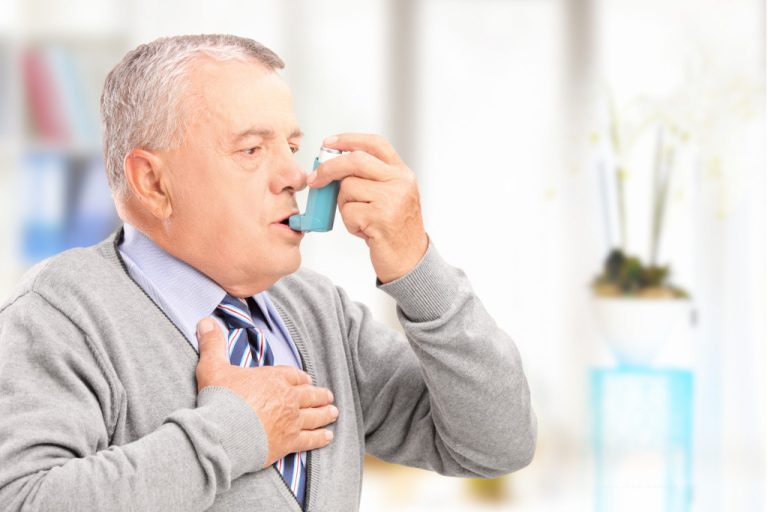COVID-19 is caused by a coronavirus that triggers an infection in the respiratory tract. It can affect the nose, sinuses, and throat in the upper respiratory tract, or the windpipe and lungs in the lower respiratory tract. In people with a weak immune system due to comorbidities, COVID-19 can progress to a fatal condition with pneumonia, heart issues, liver issues, respiratory failure, and septic shock. Organs and tissues can be damaged when the body responds to the infection by releasing massive amounts of cytokines which are inflammatory proteins.
Because of the effect of COVID-19 on the respiratory system, people who already have respiratory problems have a higher risk of serious complications if infected. It is, therefore, crucial that apart from avoiding COVID-19 infection during the pandemic, people must also avoid the development of all other respiratory diseases. Proper management is vital for people who already have these problems in this health crisis.

Types of Respiratory Diseases
The various types of lung disease involve the respiratory system or a person’s breathing capability. They can be caused by infections from viruses, bacteria, or fungi. They can also develop with smoking or exposure to air pollution, radon gas, asbestos, uranium, vinyl chloride, beryllium, and arsenic.
Several chronic lower respiratory diseases (CLRD) comprise the fourth top cause of death in the United States. These include chronic obstructive pulmonary disease (COPD), which also covers chronic bronchitis and emphysema. These are mostly caused by smoking.
Other illnesses under CLRD are pulmonary hypertension, asthma, and occupational lung diseases. Asthma is a very common chronic respiratory illness affecting 25 million Americans and often starts from early childhood. This is closely linked with genetics and respiratory allergies.
One example of occupational lung disease is mesothelioma. This is the formation of a malignant tumor in the tissues that surround the lungs, heart, and abdominal cavity after the inhalation of asbestos fibers. Lung cancer can also result from the inhalation of asbestos, but its main cause is cigarette smoking. The difference between mesothelioma and lung cancer is that the latter involves the abnormal growth of cells in the lungs.
Tuberculosis is caused by a bacterial infection. Nowadays, this is easily treated with medication. It is highly contagious, though, so the patient must take care not to infect others while under treatment.
Prevention and Management
The management of respiratory diseases must be under the supervision of a medical doctor. Appropriate medication and other interventions will be given according to the condition.
To prevent the development of respiratory disease among those who do not have it, or to accompany the management of the disease in patients, the elimination of exposure to all types of pollution is vital.
In the home, smoking must not be allowed even for guests. Hire an air duct cleaning service regularly to ensure that the quality of the air does not deteriorate due to dust, debris, fungi, molds, and bacteria. Install an ultraviolet-C (UV-C) radiation system in the air ducts of the heating, ventilation, and air conditioning (HVAC) system to kill viruses in the air, including the COVID-19 virus. According to the U.S. Food and Drug Administration (FDA), this is the safest way to use UV-C because direct radiation exposure can damage the eyes and skin.
When outdoors in an area that has a high level of air pollution, wear a mask even if you have already been fully vaccinated. This will protect you not only from COVID-19 but also from all other respiratory diseases.
Do not work for a company that exposes its employees to dangerous substances and pollutants. If you are working in one now, it is time to quit. Also, you can report unsafe work practices to the Occupational Safety and Health Administration (OSHA) of the Department of Labor.
Stay Vigilant
According to Dr. Gregory Poland of the Mayo Clinic, in 2020 doctors feared that the COVID-19 pandemic might be accompanied by an influenza pandemic. Thankfully, that did not happen. This year, however, the medical community observed an increase in cases of the respiratory syncytial virus (RSV), especially in the South. It is similar to influenza but can cause serious illness in the elderly, very young children, and infants. It is also difficult to distinguish from Covid-19 unless a nasal swab test is done.
Dr. Poland highlights the need to identify whether the patient has COVID-19, influenza, or RSV to give the appropriate treatment immediately. U.S. News reported that Dr. Greg DeMuri from the University of Wisconsin Health cited some children having COVID-19 and RSV simultaneously.
According to Contemporary Pediatrics, the rise in RSV cases began in March this year, although this was previously a seasonal illness that was more prevalent in winter. Before the pandemic, there were already about 58,000 pediatric hospitalizations due to RSV every year, with between 100 and 500 fatalities. From June to July this year, however, the average number of RSV cases among children surpassed the previous peak level. This further highlights the need for vigilance not just against COVID-19 but all other respiratory infections, as well.

